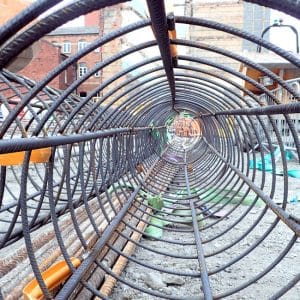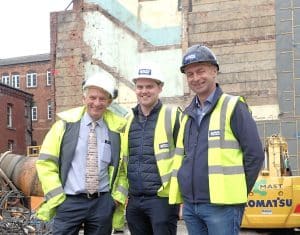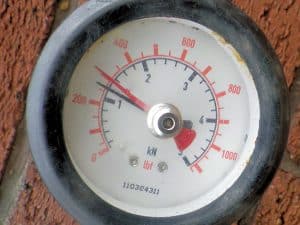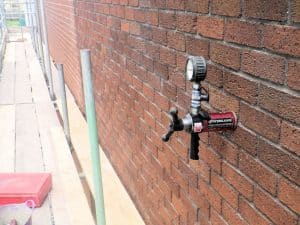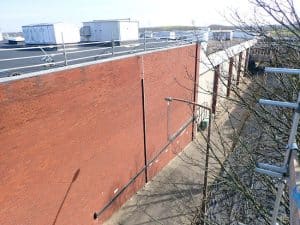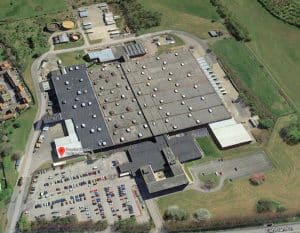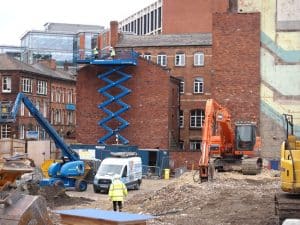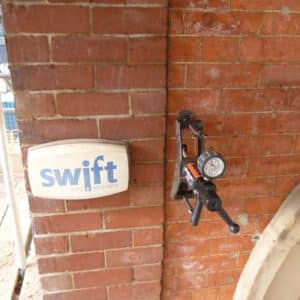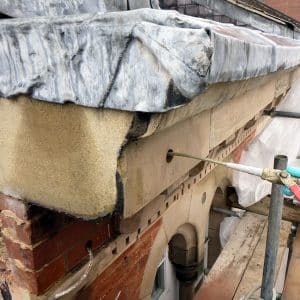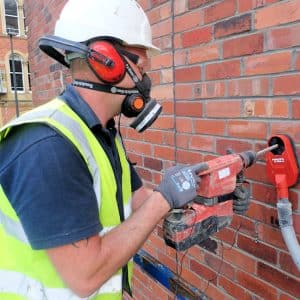Wall Tie FAQs
Questions commonly asked of our wall tie specialists
Clients are understandably nervous when they think they might have a structural issue, so our wall tie specialists are always happy to listen to your concerns and answer your questions.
Here are a few of the most common queries our experts hear – but if you want to learn more about wall tie surveys, or wall tie replacement, there’s plenty of helpful information on these dedicated pages.
If you have a specific query that you don’t feel has been answered on our website, please send us your question and we’ll reply, plus add it to this page to help others too! If you’d rather speak to a friendly and helpful team member please call us.
Also in this section
Almost all cavity walls have wall ties in them. This is because the external skin of a cavity wall is very thin in relation to its height (the slenderness ratio). This means that under wind loads it could bulge or just fall over! The wall ties bridge the cavity, transferring the strength and rigidity of the inner load bearing leaf, to the thin outer leaf. Without these, a cavity wall is in danger of collapse. Our technical director Bryan Hindle is one of the UK’s foremost experts on wall tie corrosion. He’s written a blog post called What are Wall Ties? please have a read if you have a few minutes.
Yes, many old houses do have a thin layer of rust on the wall ties and this may not seem a huge issue. However, the rusting can be much more than skin deep and the reduction in the strength of the ties and their connection to the wall can be severely reduced by rust. The Building Research Establishment has carried out independent assessments and give advice in their publications BRE digest 329 and BRE 401. We use these publications as our guide when assessing the condition of your wall ties and when specifying and installing new remedial wall ties. When metal corrodes it can expand and become thicker. This is why corrosion of some types of old wall ties can cause cracks and bulges. Here’s a technical article on wall tie corrosion and expansion, which explains the problem in more detail.
The only way to tell if you have a problem with wall tie corrosion is to have an experienced wall tie surveyor come to inspect your property. While bulging brick work, a raised roof or wall crack can all be tell-tale signs of compromised wall ties, a specialist’s tools and knowledge is needed to assess whether it’s a wall tie problem, or some other structural fault. In addition, there are some types of butterfly and wire wall ties that can rust away without any external sign of a problem at all. The only way these can be checked is by exposure or boroscope. Our surveyors will usually provide you with photographic images of your ties so you can see them for yourself; this is also useful where you need a wall tie survey for a lender, or to show to a vendor or home buyer.
Here’s a video of a simple wall tie check using a boroscope.
That depends on the extent of the problem – and why we aim to test all elevations of the property thoroughly. This ensures that we only carry out necessary work, although it’s worth bearing in mind that if your failed wall ties are due to older style ties that have degraded through age, or because they’re insufficient in quality or quantity, it’s likely that all elevations are, or will be affected.
That’s a good question and one which needs addressing. In our 30 years trading we’ve come across some quite shockingly bad wall tie installations, where clients were promised a good job and when inspected years later by our own wall tie specialists, the truth has been far from the original promise. Relying on a guarantee hasn’t helped these clients, as often the installer is long gone and never had any intention of honouring their guarantee. We guarantee our work too of course, but first and foremost we strive to make sure that the guarantee will never be called upon.
This means carefully specifying the right remedial wall tie solution and more importantly, making sure that the installation is carried out diligently and that on-site testing is carried out to ‘proof-test’ the installation. We keep digital images of the test gauge readings from site and every installation team carries an independently calibrated tension test gauge to ensure that the wall ties are known to be working before we leave site. In addition, our wall tie technicians are the best trained in the industry and are our own direct employees, taking pride in their work and the company they work for. If you ask them any questions on site, you’ll be amazed how glad they’ll be to show you their work and you can witness the tension testing in progress (make sure you ask this straight away or the tests may be done already – though the photographs of the results are available for you or others to view).
